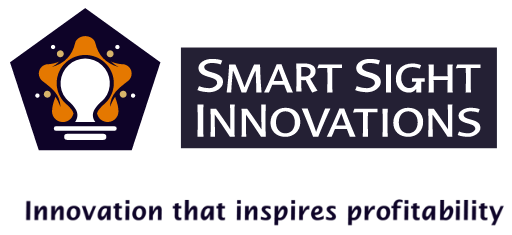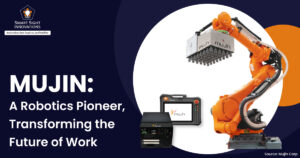
Google’s 105-qubit Willow chip represents a groundbreaking advancement in quantum computing, significantly outperforming traditional supercomputers. In benchmark tests, Willow completed complex calculations in under five minutes, tasks that would take classical supercomputers an estimated 10 septillion years to solve.
This remarkable speed is attributed to its ability to leverage qubits that can exist in multiple states simultaneously, providing exponential computational power. Furthermore, Willow demonstrates enhanced error correction capabilities, reducing error rates as more qubits are added, a crucial milestone for practical quantum applications. This positions Willow as a pivotal tool for future innovations across various industries.
Benefits of Quantum Computing for Startups

Quantum computing offers transformative opportunities for startups, enabling them to tackle complex challenges and innovate faster. It excels in solving optimization problems, helping startups in logistics, finance, and supply chain management save costs and improve efficiency. In research-intensive fields like pharmaceuticals and materials science, quantum computing accelerates discovery by simulating molecular interactions and testing new materials.
Startups leveraging AI and machine learning can benefit from faster data processing and more accurate predictive models, gaining a competitive edge. Quantum computing also enhances cybersecurity with quantum-resistant algorithms and unbreakable encryption methods like quantum key distribution.
Moreover, it enables startups to develop advanced simulations for climate modeling, engineering, and market analysis, fostering data-driven innovation. By adopting quantum technology, startups position themselves as industry leaders, attract investors, and unlock new possibilities in cutting-edge fields, ensuring scalability, efficiency, and a competitive advantage in their markets.
The Willow Chip bridges quantum computing’s immense potential with practical applications for startups and industries. While quantum computing tackles highly complex problems, the Willow Chip complements it by providing unparalleled processing power and efficiency for real-world tasks. Startups leveraging both technologies can achieve breakthroughs, such as optimizing logistics with quantum algorithms while running resource-efficient operations on the Willow Chip.
By integrating with quantum systems, the Willow Chip serves as a critical link, enabling seamless data processing and scalability. This synergy empowers startups to harness quantum computing’s possibilities while maintaining cost-effective and high-performance solutions for today’s challenges.
Why Are Startups Turning to the Willow Chip in 2025

Startups are increasingly turning to the Willow Chip in 2025 due to several key factors that make it a game-changer for emerging businesses. Here’s why:
1. Reduced Power Consumption
With energy efficiency at its core, the Willow Chip requires less power to perform intensive computations. This not only lowers electricity bills but also reduces the environmental footprint of operations. For startups developing battery-powered devices, the chip extends battery life, enhancing product appeal and reducing operational costs.
2. Facilitates Innovation
The Willow Chip supports advanced data processing, enabling startups to tackle complex challenges in fields like AI, machine learning, and IoT. Startups can develop sophisticated algorithms, improve product functionality, and experiment with new ideas that were previously unattainable.
Its energy-efficient design allows startups to build scalable prototypes without requiring heavy investment in infrastructure, fostering experimentation and iterative improvements.
With the chip’s ability to handle real-time data analytics, startups can gain actionable insights faster, empowering them to innovate in response to market trends or user feedback.
3. Faster Time-to-Market
The Willow Chip reduces the computational bottlenecks that slow development. Startups can run simulations, train models, and debug prototypes more quickly, cutting weeks off the typical development timeline. By enabling efficient on-device processing, the Willow Chip reduces dependency on external cloud services, ensuring faster deployment and reducing delays caused by connectivity issues.
The chip supports rapid testing and iteration, allowing startups to make data-driven decisions and bring their products to market swiftly.
4. Scalability for Growing Startups
Startups in dynamic industries need scalable solutions to meet growing demands. The Willow Chip supports a wide range of applications, allowing startups to scale their operations without worrying about outgrowing their hardware infrastructure.
5. Enhanced AI and Machine Learning Capabilities
The Willow Chip is designed to support advanced technologies like AI and machine learning. Startups focused on innovation in AI can benefit from the enhanced capabilities, enabling them to create smarter, more efficient solutions for their customers.
6. Future-Proofing Technology
By adopting the Willow Chip, startups are not just solving today’s problems but also preparing for the future. Its design is built to handle emerging technologies and applications, ensuring that businesses remain competitive as the tech landscape evolves.
7. Sustainability Benefits
Startups with a focus on sustainability can leverage Willow Chip’s energy-efficient design to align with eco-friendly initiatives. Reduced power consumption and smaller carbon footprints are key selling points in a world increasingly focused on environmental responsibility.
8. Attracting Investors and Partners
The adoption of cutting-edge technology like the Willow Chip helps startups position themselves as innovative leaders. This can be a strong selling point when attracting investors, potential partners, or customers who are eager to engage with the latest advancements.
9. Support for IoT and Edge Computing
As the IoT continues to grow, startups working in IoT and edge computing sectors find the Willow Chip to be a powerful ally. Its ability to process large amounts of data at the edge, closer to where it’s generated, allows for faster decision-making and more efficient operations.
By embracing the Willow Chip in 2025, startups can lower costs, increase operational efficiency, and push the boundaries of innovation, giving them the tools needed to thrive in a highly competitive and rapidly changing market.
How Startups Can Leverage the Willow Chip to Attract Investors?

Startups can harness Willow Chip’s advanced capabilities to enhance their appeal to investors. Its cutting-edge technology demonstrates a commitment to innovation, positioning startups as leaders in their industries. The chip’s efficiency reduces operational costs, improving profit margins, which is a key factor for investor confidence.
By enabling faster product development and scalability, the Willow Chip allows startups to respond swiftly to market demands, a quality investors value. It also supports data-driven decision-making, enhancing business strategies with real-time insights. Additionally, the Willow Chip’s energy efficiency aligns with sustainability goals, attracting eco-conscious investors.
The Willow Chip Ecosystem in the Coming Decade

The Willow Chip is poised to shape technological advancements and industry landscapes over the next decade. Here are the key trends to watch in its evolving ecosystem:
1. Widespread Adoption Across Industries
The Willow Chip’s versatility and efficiency will drive adoption in industries like healthcare, finance, IoT, and AI. Startups and established companies alike will integrate the chip into applications ranging from medical diagnostics to smart cities, accelerating innovation across sectors.
2. Proliferation of Edge Computing
With its energy-efficient design and high-performance processing, the Willow Chip will enable more devices to handle computations locally. This will reduce reliance on cloud infrastructure, improve real-time decision-making, and power advanced IoT applications like autonomous vehicles and industrial automation.
3. Advancements in AI and Machine Learning
The Willow Chip will enhance AI capabilities by supporting faster model training and real-time analytics. This will lead to smarter, more adaptive systems in areas such as personalized healthcare, predictive maintenance, and customer experience.
4. Accelerating Green Tech and Sustainability
As energy efficiency becomes a global priority, the Willow Chip will play a critical role in reducing the environmental footprint of technology. Its low-power consumption will support startups and companies focused on green solutions, such as renewable energy optimization and eco-friendly consumer products.
5. Integration with Quantum Computing
The Willow Chip will likely complement quantum computing systems by acting as an efficient intermediary for preprocessing and postprocessing tasks. This hybrid approach will enable startups to tackle even more complex problems while maintaining practical efficiency.
6. Emergence of a Developer Ecosystem
As the Willow Chip gains traction, a robust developer ecosystem will form, featuring tools, SDKs, and open-source libraries to simplify integration. This ecosystem will empower startups and innovators to quickly adopt and customize the chip for their specific needs.
7. Enhanced Cybersecurity Applications
With growing cyber threats, the Willow Chip will underpin advanced security measures, including real-time threat detection and quantum-resistant encryption. Startups developing cybersecurity solutions will leverage the chip to stay ahead of emerging threats.
8. New Business Models
The Willow Chip will unlock innovative business models, such as as-a-service offerings in areas like AI, IoT, and edge computing. Startups will create new revenue streams by leveraging the chip’s unique capabilities to offer tailored solutions.
9. Global Expansion and Accessibility
Over the next decade, the Willow Chip’s affordability and scalability will make advanced computing accessible to startups and small businesses worldwide, democratizing innovation and fostering growth in emerging markets.
10. Collaboration with Emerging Technologies
The Willow Chip will integrate seamlessly with other technologies, such as 5G, AR/VR, and blockchain, enabling synergistic applications that redefine industries. For example, AR/VR systems powered by the chip will deliver immersive experiences with minimal latency.
The Willow Chip is more than a technological advancement. It is the foundation of an ecosystem that will drive innovation, efficiency, and sustainability in the coming decade. As it becomes a cornerstone for startups and industries, its influence will shape the future of computing and redefine what’s possible.













